 |
…lasting behavior change cannot be forced. It is not a short-term activity; it is continuous.
|
033 |
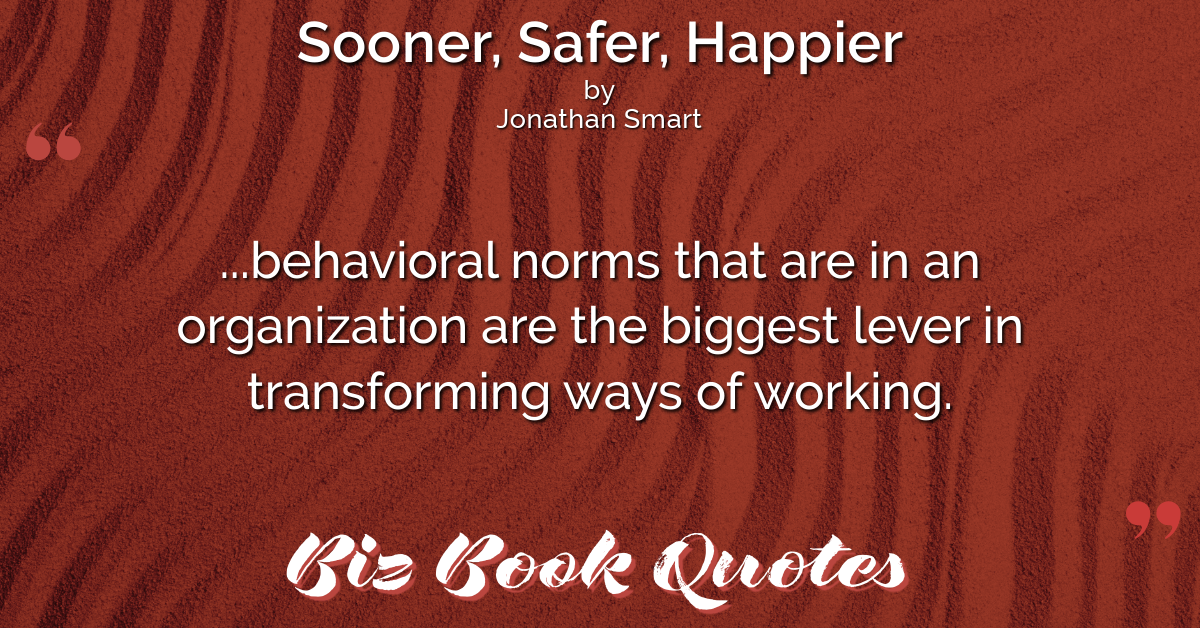 |
…behavioral norms that are in an organization are the biggest lever in transforming ways of working.
|
046 |
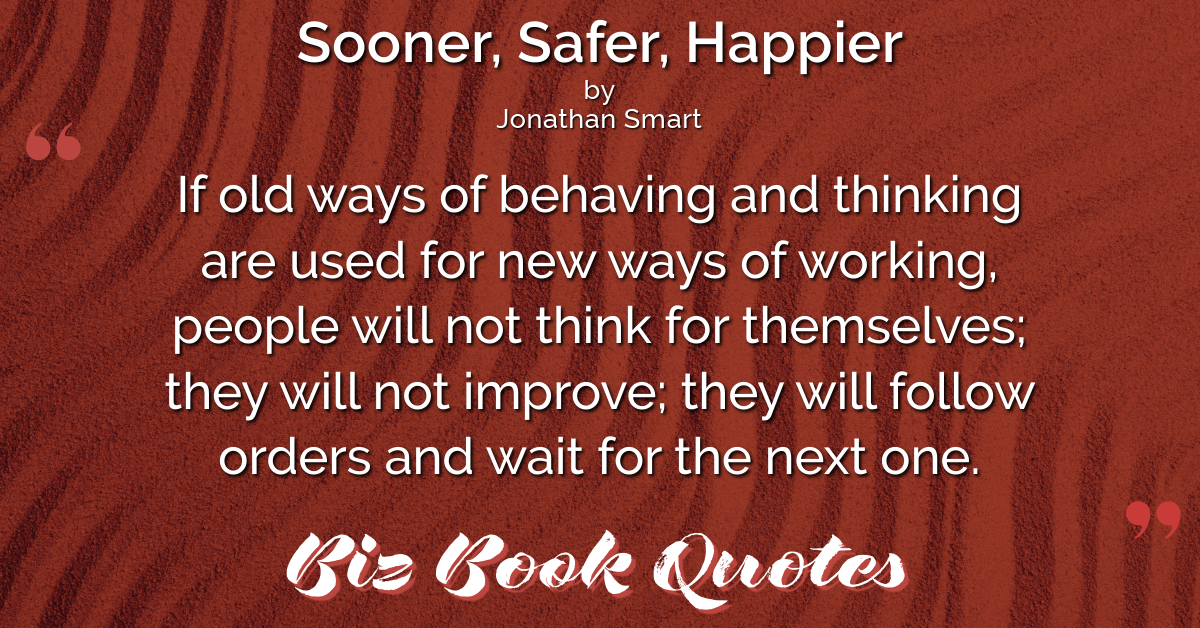 |
If old ways of behaving and thinking are used for new ways of working, people will not think for themselves; they will not improve; they will follow orders and wait for the next one.
|
050 |
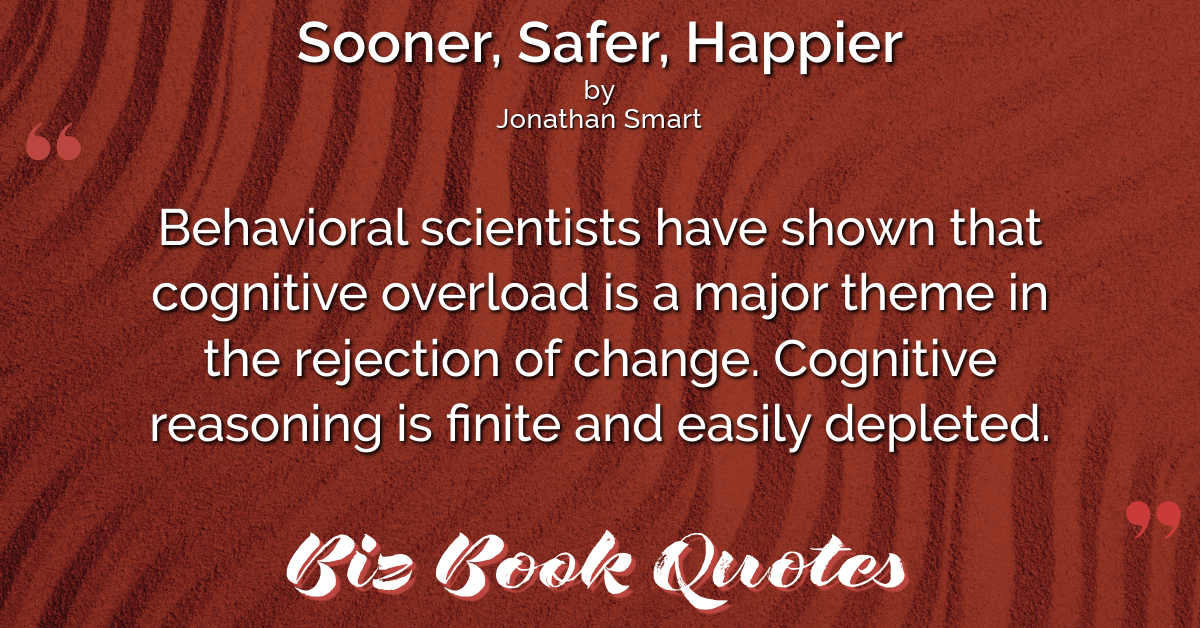 |
Behavioral scientists have shown that cognitive overload is a major theme in the rejection of change. Cognitive reasoning is finite and easily depleted.
|
072 |
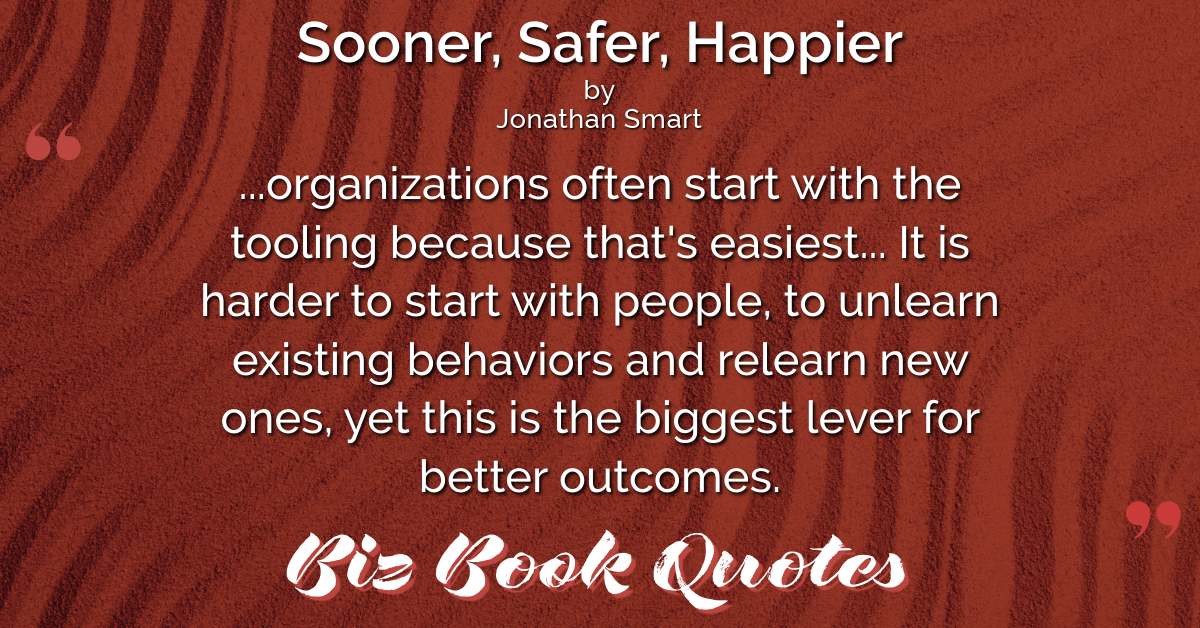 |
…organizations often start with the tooling because that’s easiest… It is harder to start with people, to unlearn existing behaviors and relearn new ones, yet this is the biggest lever for better outcomes.
|
095 |
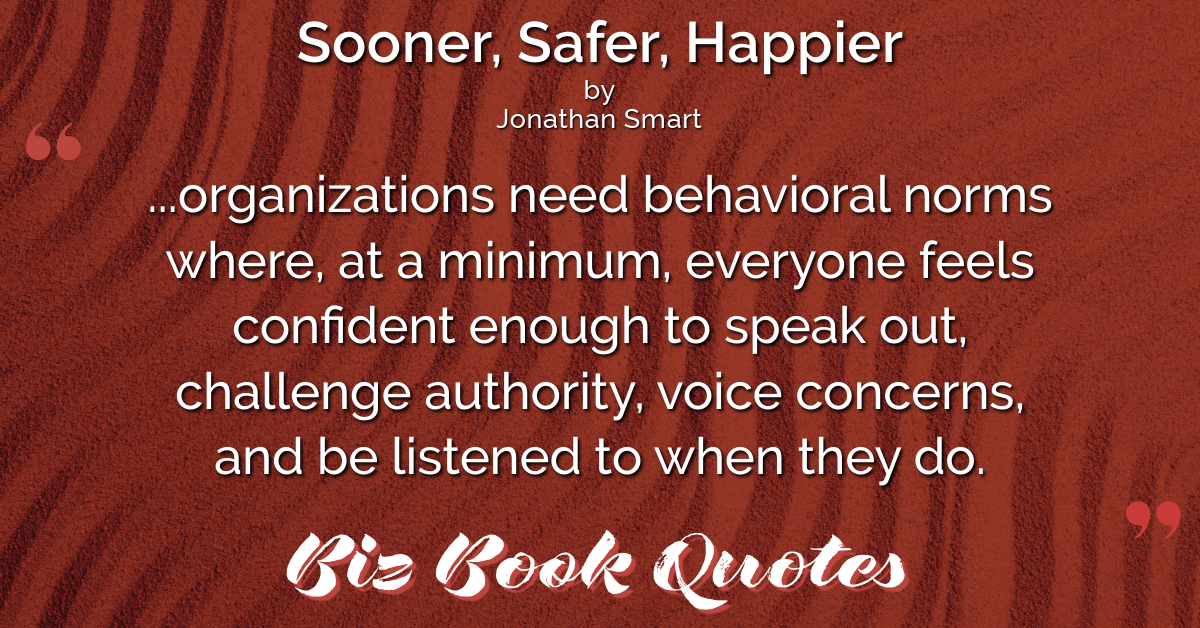 |
…organizations need behavioral norms where, at a minimum, everyone feels confident enough to speak out, challenge authority, voice concerns, and be listened to when they do.
|
128 |
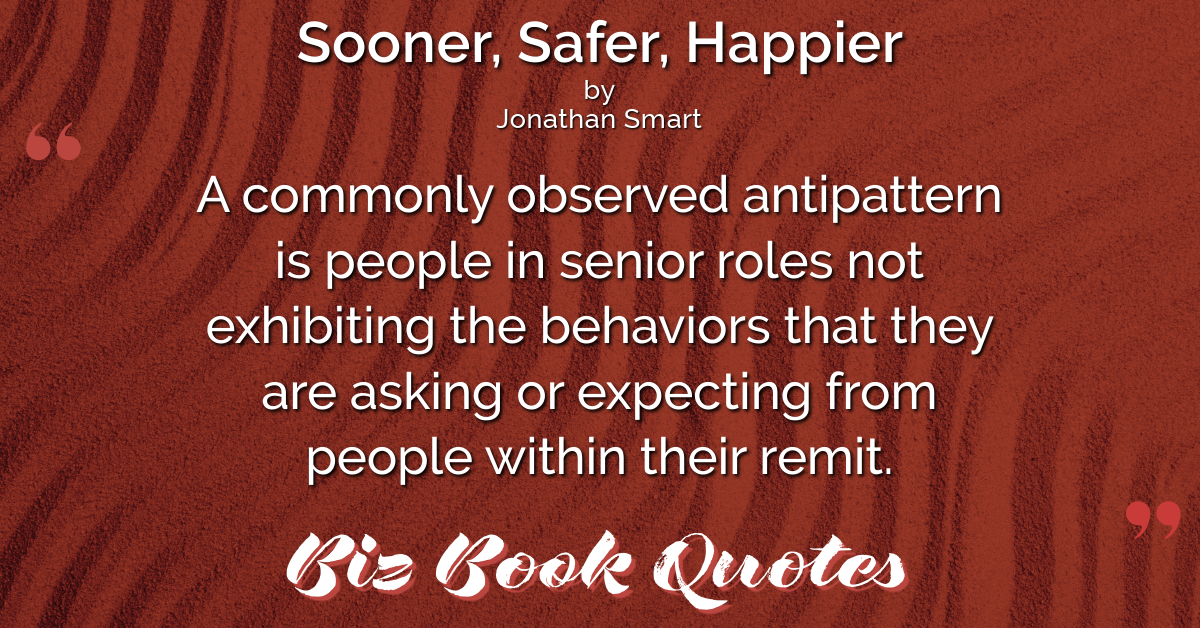 |
A commonly observed antipattern is people in senior roles not exhibiting the behaviors that they are asking or expecting from people within their remit.
|
130 |
 |
The biggest lever for better ways of working, leading to better outcomes, is behavior. Change is a social activity.
|
131 |
 |
…leaders should guide people on a journey from the front, role modeling desired behaviors, exhibiting vulnerability, and learning in the process.
|
147 |
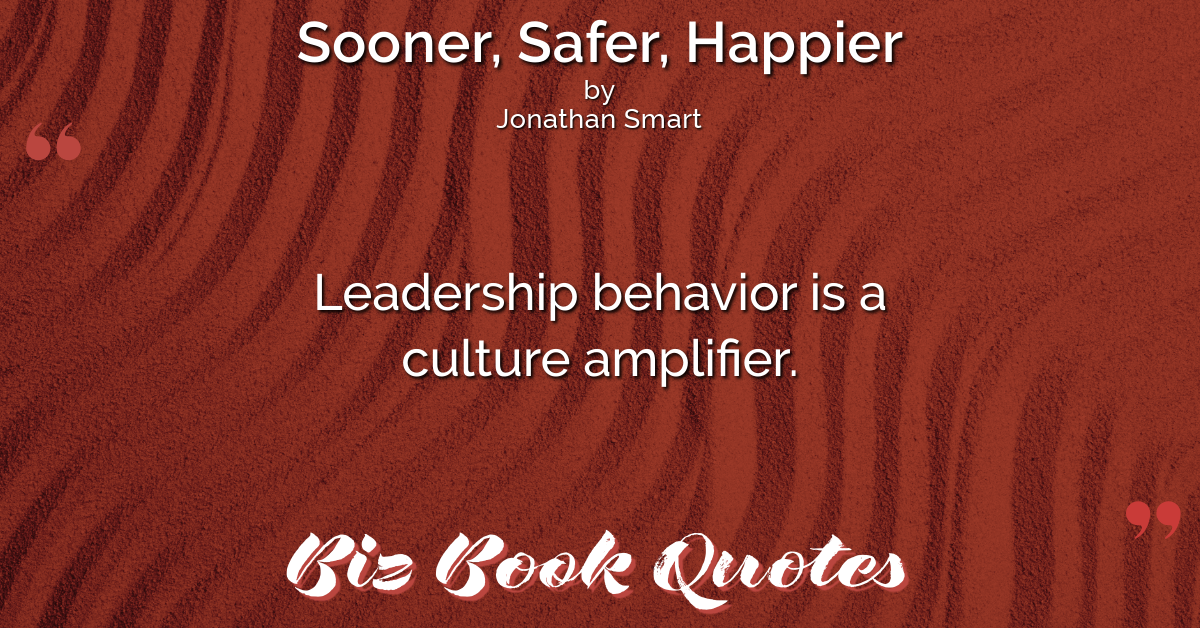 |
Leadership behavior is a culture amplifier.
|
150 |